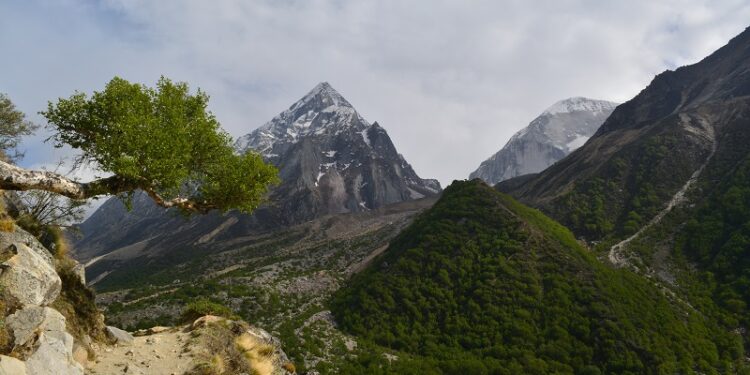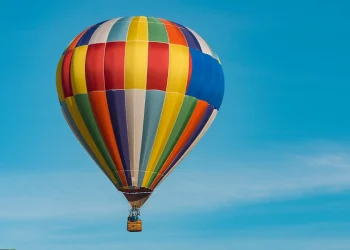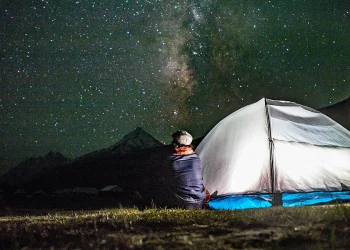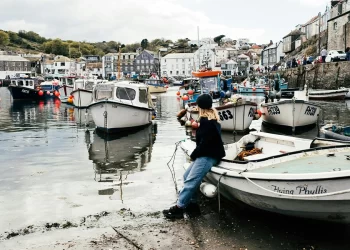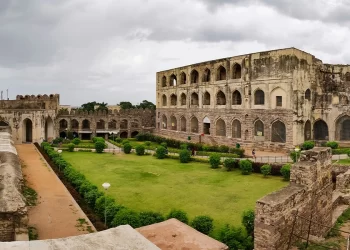By MAYANK PATHAK
How often are plans made immediately after seeing a movie or reading a blog? How often does something that we gaze on the screen motivate us to convert into a bus journey of over 3000 kms, overloaded with people, who hang their clothes to dry inside the bus? Yes, inside the bus!
If you are a spontaneous traveller, you know the feeling of transforming ‘plans’ into ‘reality’. While it surely does make you feel alive and feels you with hitherto unknown inspiration, it also leaves you inevitably handicapped at large when it comes to having choices!
So here I was, after braving 27 hours of relentless bus journeys, thanks to my spur of the moment plans, dizzy with a slight case of AMS and accompanied by a poorly packed backpack. It was a classic case of trips with poor execution you read all the time when people venture out unprepared for some “call of the mountains”. Call or not, maybe I just wanted to capture some good shots and get those extra pounds off me. And in case you are wondering what triggered this impromptu trip, it’s the ‘Meru’ movie, released in 2015 and directed by the world-famous mountaineer – Jimmy Chin. Do watch it!
A TINY TOWN NESTLED HIGH UP IN THE HIMALAYAS BESIDE THE BHAGIRATHI RIVER – GANGOTRI IS KNOWN FOR BOTH SPIRITUAL AND RELIGIOUS REASONS ALIKE. AS ONE OF THE DHAMS’ OF THE CHAR DHAM YATRA, IT IS FAMOUS FOR THE HOLY SHRINE AND IS IN PROXIMITY TO THE GAUMUKH GLACIER WHICH, ACCORDING TO HINDU MYTHOLOGY IS THE SOURCE OF THE HOLY RIVER OF GANGA.

Looking beyond the usual perspective of religious tourism, one is left spellbound with its serenity and natural beauty. It can be termed as the non-commercial abode for outdoor lovers all thanks to the strict government and forest department control. In the summer of 2018, I decided to venture deep into the Gangotri National Park and trace the origin of the Holy river Ganga. What entailed was a plethora of lifetime memories as I explored the natural abode of Goddess Ganga herself.
Gaumukh, literally meaning ‘Mouth of a Cow’ marks the birthplace of the River Bhagirathi which later merges with Alaknanda river at Devprayag in Uttarakhand and gives rise to what we all know as the holy Ganges. Gaumukh is located deep within the Gangotri National Park and is accessible only via foot. A 18 km trek from Gangotri leads one through a well-marked trail filled with beautiful vistas and snow-clad mountains like Mount Shivling (6543m), famously also called as Matterhorn Peak because of its strange similarity with the American mountain. Vegetation varies with trek elevation and becomes sparse as one ascends, consisting of deodar, spruce and such. One may also spot Blue sheeps (Bharals) or Himalayan Bucks (Musk Deer) on the trail, usually towards the later section of the trek as the elevation rises above 11000 feet.
A STEEP SET OF STAIRS BESIDES THE GANGOTRI TEMPLE LEADS TO THE TRAIL, WHICH THEN GRADUALLY ASCENDS TO A MOUNTAIN RIDGE TRAIL LEADING TO A FULL-FLEDGED VIEW OF THE HIMALAYAN RANGE WHICH EXTENDS UNTIL THE VERY END OF THE TRAIL.

The gushing sound of the Bhagirathi River accompanies the trekker all throughout the trail. There are plenty of spots to refill water from natural sources. After about 9 kms of the steady up and down trail, one encounters a large cluster of pine trees. This area is called Chirbasa and is often the first stop for trekkers enroute Gaumukh. The first few tea stalls/ eating points of the journey are located at Chirbasa where one can relax and take in the view while sipping steaming tea.

An averagely seasoned trekker will take around 6 hours to reach this point from Gangotri. It is after Chirbasa that one can notice the vegetation getting sparse, giving a feeling of trekking in a dry desert like Spiti Valley or Ladakh. Please tread carefully on the trail post Chirbasa, as it is a frequent landslide/ rock fall zone. It is best to watch your steps and be aware of your surroundings. After trekking for about 3 hours and covering a distance of about 5 kms, one approaches the last inhabited settlement on the trail – Bhojbasa.
THE LAST SECTION OF THE TRAIL LEADING TO BHOJBASA IS QUITE ROCKY. ONE DOES NOT SEE THIS SETTLEMENT UNTIL ONE REACHES A CERTAIN POINT.
Bhojbasa, perched high up at an altitude of almost 3800 metres offers food and hospitality facility via its ashrams and a government rest house. The nature of accommodation is basic and of shared type. Meals outside the ashrams can be quiet expensive because of the long distance from large settlements; so be prepared to shell out generously if you have a healthy appetite!
Many choose to stay the night at Bhojbasa and then trek the remaining 4 kms distance to Gaumukh the next day. However, if one reaches Bhojbasa before 2 PM, it is possible to trek to Gaumukh the same day and return back to Bhojbasa for the night.

Depending on energy levels and mood, one can select either option. A point to be kept in mind is that the trail between Bhojbasa and Gaumukh, although well marked, is a frenzy of boulder climbing as well as a non-gradual gradient filled with frequent ups and downs.

One has to ensure that sufficient water is carried while attempting this section, as there are no water filling points en-route unlike the rest of the trail. If one decides to cover Gaumukh from Bhojbasa the same day, one should be sure of ones energy level or else stay the night at Bhojbasa. The later lets the body relax and acclimatize to the high altitude of Bhojbasa.

After a gruelling 3 hour climb to Gaumukh, one is rewarded with the sight of the brown coloured (not aqua blue as seen in many pictures) Gaumukh glacier in the distance. Please refrain from going nearer than 500 m of the glacier as it is strictly prohibited since it pollutes the sanctity of the holy destination as well as harms the delicate local ecosphere.

One can peacefully consume snacks brought along at this point without littering while admiring the scenic landscape around you. You’ve made it to the Gaumukh Glacier! As for me, I reached this point within 72 hours of finishing the movie. What about you?

The way back to Bhojbasa from Gaumukh is not easy either. It would take approximately 2 hours to return back to Bhojbasa and then another 4-5 hours to Gangotri depending on one’s pace. Even if you did Gaumukh glacier on the 2nd day of your trek, reaching Gangotri on the same day is very much possible. Once at Gangotri, feel free to treat yourself to a feast, a hot shower and snooze comfortably at the hotel/ ashram. I did! It also makes sense to make arrangements for the return journey before you do so.
Last but not the least, don’t forget to collect a bottle of the holy water river to bring home! Afterall, what’s a journey without a souvenir?

How to Reach: Gangotri (dist. Uttarkashi, Uttarakhand) is the starting point of the Gaumukh trek. It is about 500km from Delhi, 270 kms and 287 kms from Rishikesh and Haridwar respectively.
Railways: One can reach Dehradun/ Haridwar/ Rishikesh via train and then proceed to take a cab or use public transport. Airways: One can take a flight to Dehradun, and then a cab/ train to Haridwar or Rishikesh and opt for public transport or cab till Gangotri.

Stay: 1) Gangotri: Various hotels and ashrams with per night cost ranging from Rs.300 to Rs.1500 depending on quality and amenities provided.
2) Gaumukh: While there is no accommodation at Gaumukh itself, accommodation is available in Bhojbasa (14 kms into the trek). Three ashrams are available costing Rs.300-400 per person per day all inclusive. The nature of stay in the ashram is basic. The GMVN rest house can be booked online costing about Rs.350-400 per dormitory bed, excluding food (which can be pretty expensive).
3) Another option is camping. One can pitch his/ her own tent in Bhojbasa.
Elevation: Gangotri is at an altitude of 3415 m, whereas Gaumukh is almost 3892 m at the snout of the Gangotri glacier.
 Trek Duration: Two-three days. Overnight stay at Bhojbasa.
Trek Duration: Two-three days. Overnight stay at Bhojbasa.Trekking Distance: About 18 kms.
Best Time: May to June or Sept to Oct.
Permits: To be procured from the District Forest Officer, Uttarkashi or in Gangotri. Can also be procured online. ID proof is required. Permit cost is Rs. 150 per person (Indian) and Rs. 600 per person (foreigners). Timing for Gangotri office is 8am to 10am, and is open throughout week. For online booking, please refer to http://www.swsuttarkashi.com/Permission/GangotriNationalPark

TIPS: There is no mobile connectivity of any sort after an hour into the trek. • Being a high-altitude trek, there is risk of AMS. Proper acclimatization at Gangotri is thus recommended before trekking. • Temperatures vary widely in the mountain on an hourly basis. Try to dress in layers and bring a light jacket for cold nights (even in summers). • The trail is well marked and hence a guide is not essential. However guide options are available in Gangotri town itself. Hiring a guide also contributes to the local economy and gives unique insight into the local Himalayan culture. • Ponies are available till Bhojbasa, costing up to Rs.1500 per pony. • Please refrain from dumping waste in mountains and practice responsible tourism.
Mayank Pathak is a part-time backpacker, full-time tourism student with an innate wanderlust. He loves sharing his mind’s eye through words and visuals.

Founded in 2016, The Traveller Trails is a print and digital magazine and a trusted source for current news, trends, analysis, opinions, interesting blogs, videos and exclusive interviews from every corner of the world.


